In the dynamic world of business, data reigns supreme. It fuels growth, grants valuable customer insights, and enhances operational efficiency. Investing in data management holds the key to unlocking a multitude of benefits, empowering businesses to stay ahead of the competition. However, in today’s macroeconomic landscape, where financial prudence is paramount, achieving a quick return on investment (ROI) has become more crucial than ever. In this blog post, we’ll delve into the realm of achieving in-year ROI for data management investments, enabling organizations to thrive sustainably while accelerating towards profitability, gaining a competitive edge, and enhancing the customer experience. So, fasten your seatbelts and get ready to explore four transformative strategies that can revolutionize your organization’s fortunes!
Importance of Data Management Investments
Enterprises in today’s era of abundant data understand the importance of data management. This was not the case some years back, but the growing influx of unstructured data (80% of all data generated) has pushed the cause for a reliable and structured data management process. It’s like having a trusted ally that collects, organizes, and leverages data to unlock a massive competitive advantage. With data ducks in a row, enterprises can make informed decisions based on accurate information, gain deep insights into customer behavior, and seize those hidden opportunities that others might overlook. The foresight provided is invaluable in navigating the business landscape.
Intelligent and efficient management of data supercharges business operations by streamlining processes, optimizing resource allocation, and improving overall performance. It’s like giving the enterprise a turbo boost! Collaboration and knowledge sharing become seamless, breaking down silos and fostering an innovative culture. Compliance and data security become stringent, ensuring that enterprises stay on the right side of the law, protect sensitive information, and build trust with customers. It’s a win-win situation for all.
Here’s where it gets exciting: Technology is the key to unlocking the true potential of enterprise data. Just managing it is no more an option. Enterprises need to break free from traditional methods and leverage tools such as powerful analytics, mind-blowing artificial intelligence, and futuristic machine learning to combat the current data challenges enterprises face. These advanced technologies enable enterprises to derive actionable insights, uncover hidden patterns, and predict outcomes with remarkable accuracy. They automate routine tasks, enhance decision-making processes, and drive innovation. With technology-based data management, enterprises can leverage these cutting-edge innovations to personalize customer experiences, optimize business processes, and stay ahead of the competition. They can tap into real-time data, harness agile data management practices, and seize opportunities as they arise. By strategically managing their data and harnessing technologies, enterprises can position themselves as leaders in their industries, leveraging it as a strategic asset to drive growth, innovation, and long-term success.
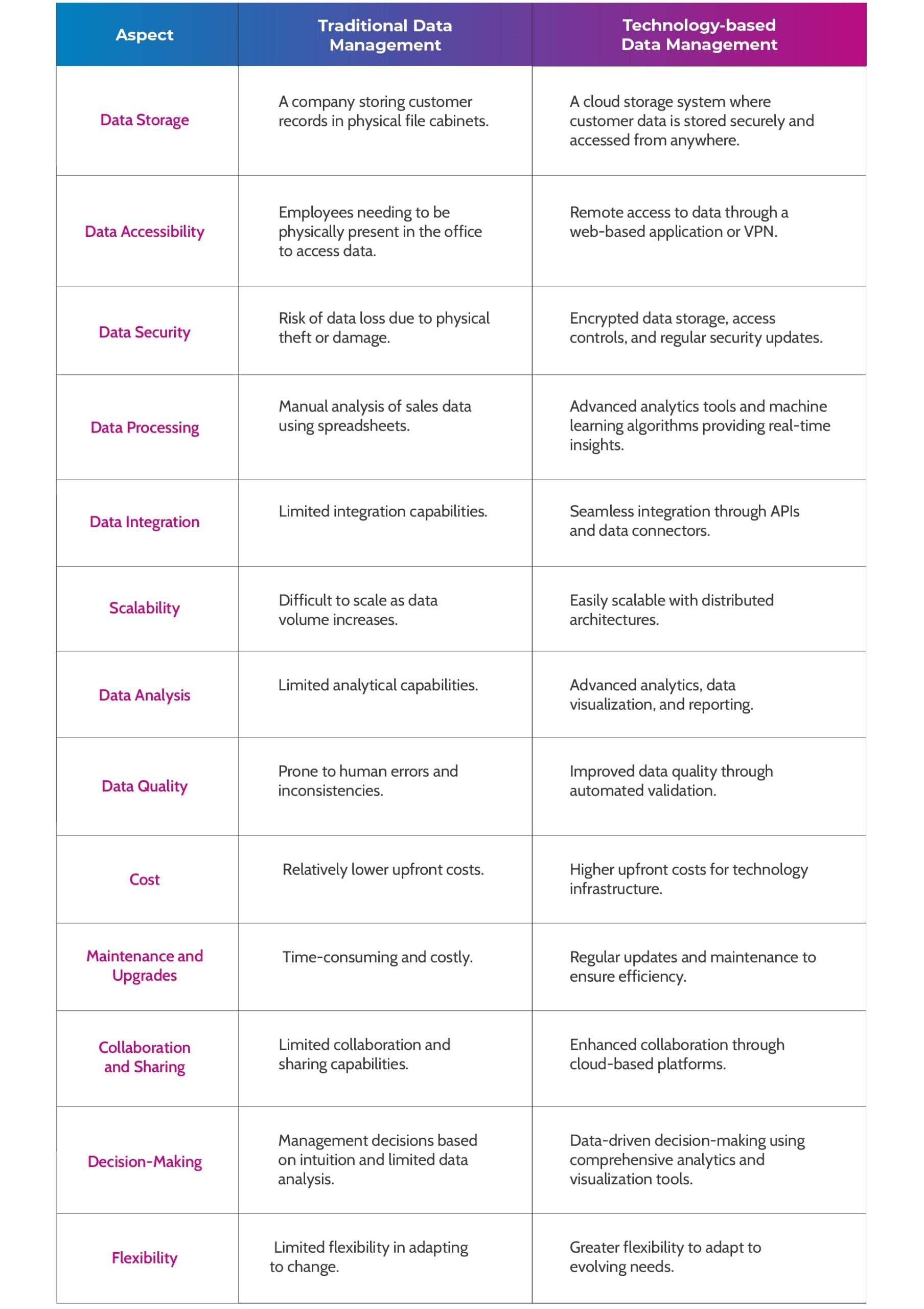
The Ultimate ROI Model for Maximum Returns
Making strategic decisions regarding data management software investments is a crucial step for businesses aiming to harness the power of data in today’s digital age. Such investments involve selecting and implementing software tools that enable efficient data collection, storage, analysis, and utilization. However, at the core of these decisions lies the fundamental consideration of return on investment (ROI).
ROI serves as the guiding metric for assessing the financial viability and potential benefits of data management software investments. Before committing resources to a particular software solution, organizations carefully evaluate its projected ROI. ROI (Return on Investment) is a financial metric used to measure the profitability and efficiency of an investment. This analysis involves estimating the costs associated with acquiring and implementing the software, as well as the expected returns it will generate in terms of enhanced operational efficiency, improved decision-making, and ultimately, increased revenue or cost savings. The period for ROI can vary depending on the nature of the investment and the specific industry or business involved. Here are some typical periods for ROI:
- Short-term ROI: This period typically ranges from a few months to a year. It is commonly used for smaller-scale investments or projects that generate relatively quick returns, such as marketing campaigns, product launches, or equipment upgrades.
- Medium-term ROI: This period usually spans one to three years. It is applicable to investments that require a moderate amount of time to generate returns, such as business expansions, new product development, or entering new markets.
- Long-term ROI: This period extends beyond three years and can range from several years to decades. Long-term ROI is often associated with substantial investments in areas like real estate, infrastructure projects, research and development, or major acquisitions.
In today’s fast-paced and unpredictable business environment, the concept of IN-YEAR ROI takes on paramount importance as a culmination of value from multiple time perspectives. It encapsulates the essence of short-term, medium-term, and long-term success, making it a crucial concept for enterprises to adopt in order to not only survive but thrive in the current macroeconomic conditions.
Traditionally, businesses have relied heavily on long-term investments as a means to secure future growth and profitability. However, the rapidly changing dynamics of technology, markets, and consumer behavior have rendered long-term planning alone insufficient. The pace of innovation and disruption requires organizations to be nimble and adaptive, making shorter-term results increasingly vital for survival.
IN-YEAR ROI prompts enterprises to prioritize investments that yield tangible returns within a shorter timeframe. This approach encourages astute resource allocation and a focus on initiatives that can deliver results quickly. By channeling resources into projects with immediate impact, organizations can generate positive outcomes that provide them with a competitive edge in the current economic landscape. Moreover, the adoption of IN-YEAR ROI enables businesses to better navigate the uncertainties and challenges posed by macroeconomic conditions. Rather than solely relying on long-term strategies that may be influenced by unforeseen disruptions, enterprises can employ a more agile and flexible approach. This allows them to adapt swiftly to market shifts, capitalize on emerging opportunities, and mitigate risks more effectively.
- According to a study by IDC, organizations that focus on achieving quick wins and fast ROI through software investments achieve a 20% higher ROI compared to those with long-term ROI strategies.
- A survey conducted by Gartner found that 74% of organizations prioritize projects with shorter payback periods during challenging economic conditions.
- The Boston Consulting Group (BCG) reported that organizations that adopt agile practices and focus on delivering quick wins see an average increase of 37% in revenue and a 30% decrease in costs.
Embracing IN-YEAR ROI does not mean neglecting the long-term perspective altogether. On the contrary, it recognizes that long-term success is an outcome of achieving shorter-term victories. By consistently generating positive results within a shorter timeframe, enterprises create a solid foundation for sustained growth and profitability in the long run.
The IN-YEAR ROI model is the need of the hour today as it empowers organizations to build resilience, innovation, and sustainable success. It requires a strategic mindset that blends the advantages of short-term wins with a broader vision for the future. By embracing this approach, businesses can effectively navigate the current economic landscape, stay ahead of the competition, and emerge victorious.
Four Growth Hacks with IN-YEAR ROI
1. Agility
- IN-YEAR ROI: With an IN-YEAR ROI model, organizations can respond quickly to market changes and adapt their strategies. According to a study by McKinsey, agile organizations are 1.5 times more likely to be top performers in their industry.
- Long-term ROI: Long-term ROI models often involve extended implementation periods, making it challenging to adapt swiftly to changing market dynamics.
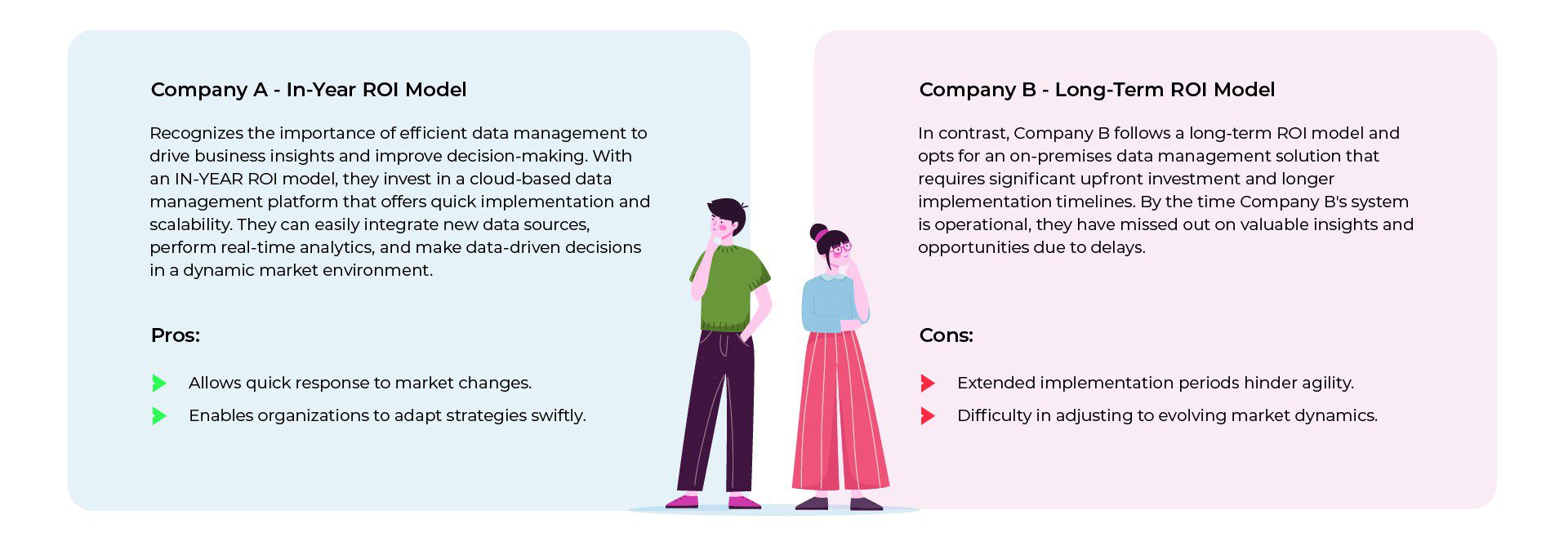
2. Risk mitigation
- IN-YEAR ROI: In uncertain economic conditions, an IN-YEAR ROI model helps mitigate risks by achieving returns within a shorter timeframe. According to a report by PwC, 67% of organizations reported that project failure rates increased during uncertain economic times, emphasizing the importance of quick wins.
- Long-term ROI: Long-term ROI models may be exposed to prolonged economic risks, potentially impacting the overall return on investment.
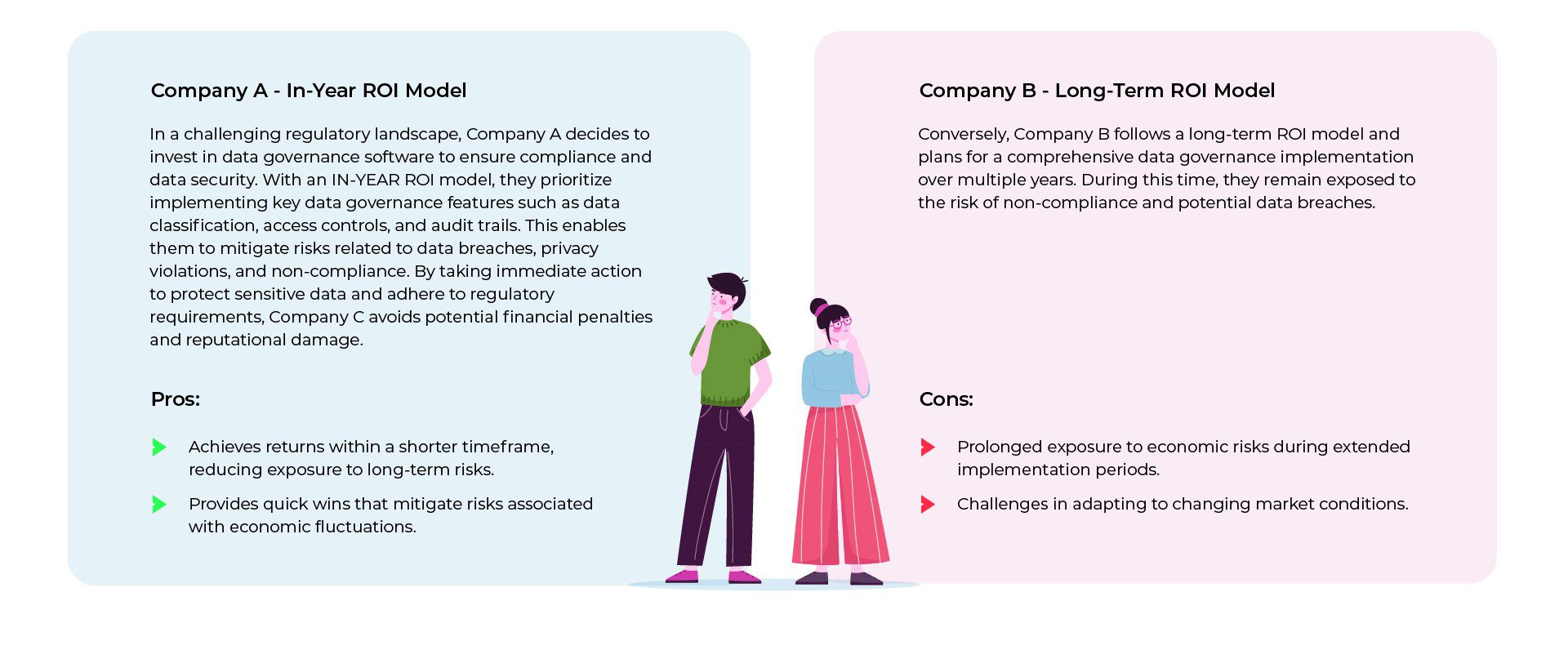
3. Demonstrable value
- IN-YEAR ROI: An IN-YEAR ROI model enables organizations to deliver quick wins and showcase tangible value. According to a study by the Project Management Institute (PMI), organizations that provide clear ROI metrics are 1.5 times more likely to achieve project success.
- Long-term ROI: Long-term ROI models may face challenges in demonstrating immediate value, potentially leading to stakeholder skepticism or reduced support.
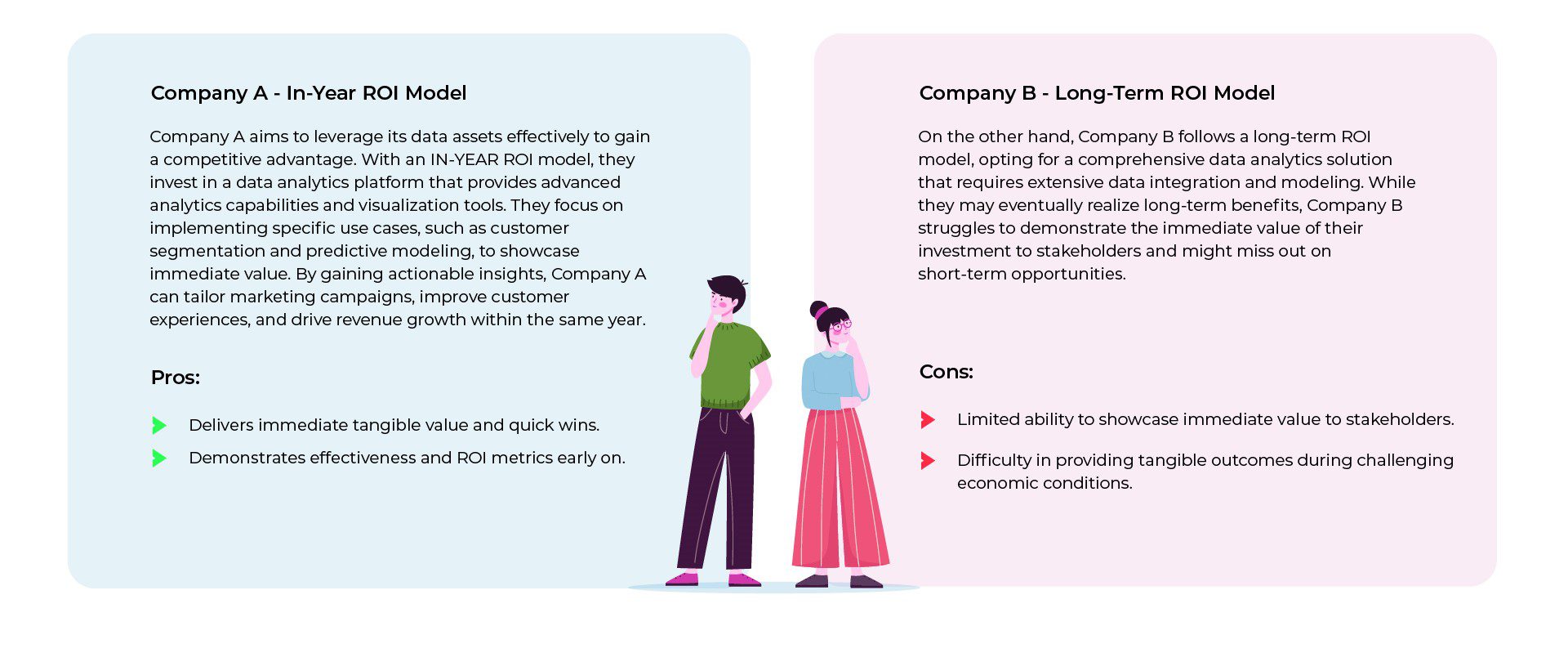
4. Resource optimization
- IN-YEAR ROI: In daunting macroeconomic conditions, an IN-YEAR ROI model optimizes resources effectively. According to a survey by Deloitte, 82% of organizations consider resource optimization critical for surviving and thriving during uncertain economic times.
- Long-term ROI: Long-term ROI models may require prolonged resource commitments, potentially limiting organizations’ flexibility in resource allocation.
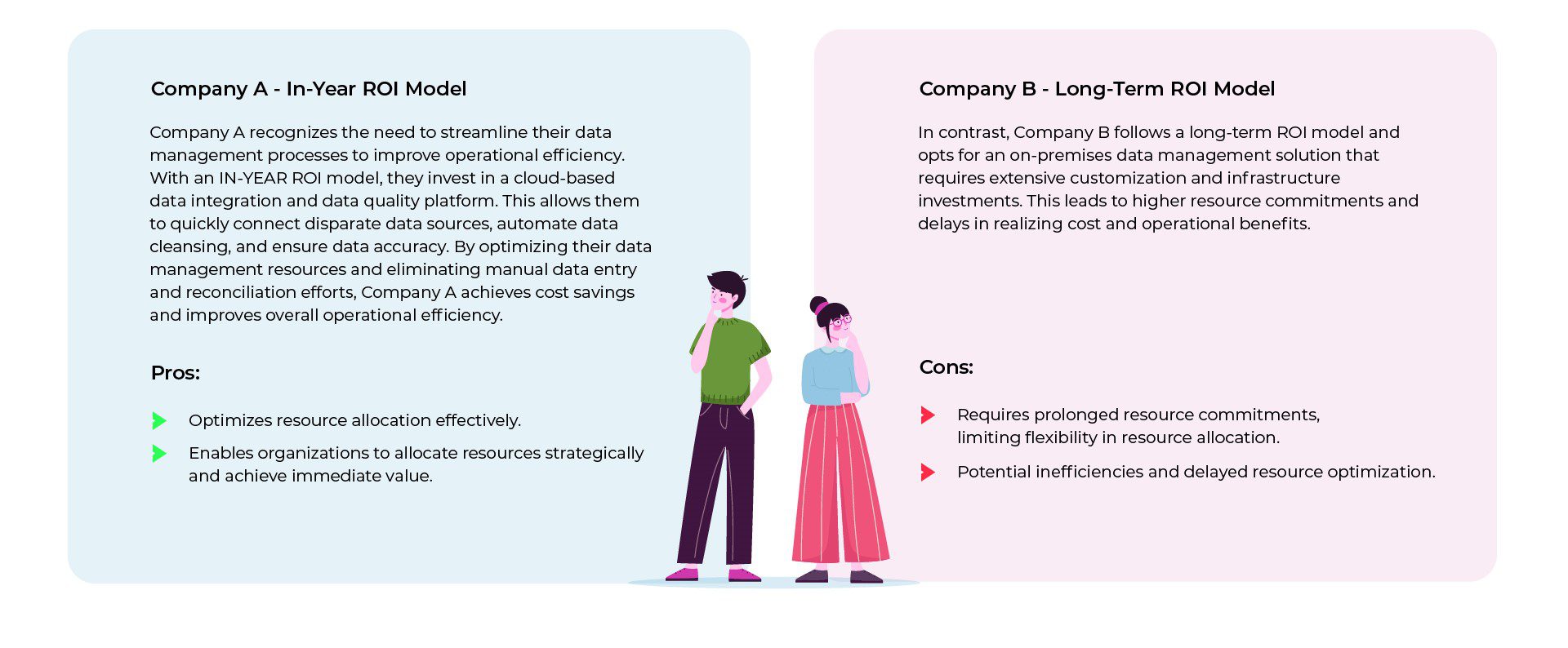
The Data Dynamics Advantage
Data Dynamics, a leading provider of enterprise data management solutions, specializes in driving in-year ROI on software investment through its unified data management platform. With a focus on infrastructure optimization, risk and compliance management, and cloud transformation, Data Dynamics empowers enterprises to maximize the value of their data assets. Here’s how:
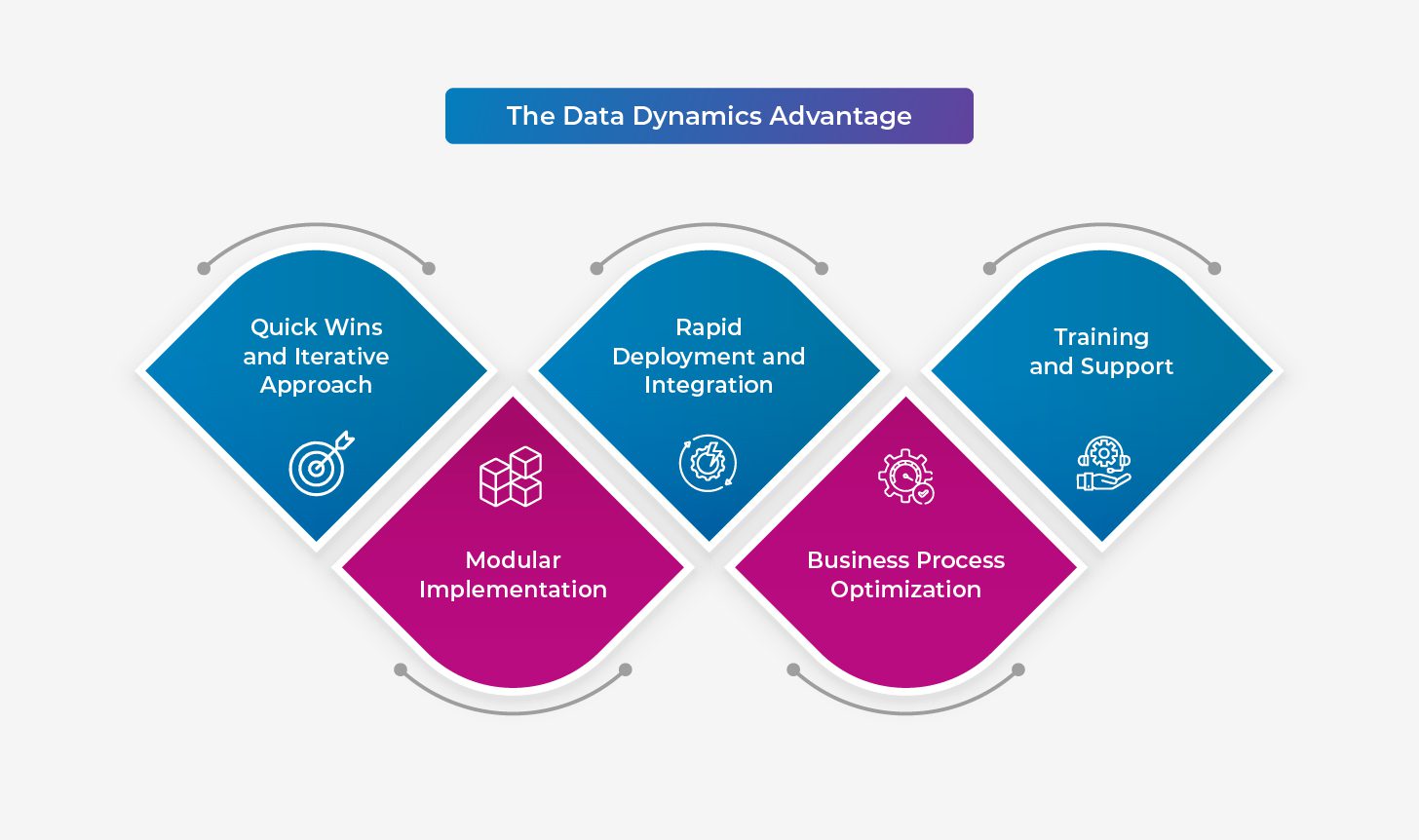
- Quick Wins and Iterative Approach: Data Dynamics Inc. focuses on delivering quick wins by identifying specific pain points or opportunities within a client’s data management processes – What and where is the data? Who has access? Is it secured and compliant? We prioritize implementing solutions that address these immediate needs, enabling clients to experience tangible benefits within a shorter timeframe. By taking an iterative approach, we continuously refine and enhance the solution based on feedback and evolving requirements, ensuring ongoing value delivery.
- Modular Implementation: Instead of pursuing a large-scale, long-term implementation, Data Dynamics Inc. advocates for a modular approach. We recommend breaking down the data management project into smaller, more manageable phases, allowing clients to implement critical functionalities or modules incrementally. This enables clients to start realizing returns and value early on while also providing flexibility to adapt and incorporate additional components as needed.
- Rapid Deployment and Integration: Data Dynamics Inc. offers solutions that can be rapidly deployed and integrated into a client’s existing data infrastructure. By leveraging existing partner ecosystems, pre-built connectors, integration frameworks, and automation tools, we expedite the deployment process. This reduces the time and effort required for implementation, allowing clients to start utilizing the solution sooner and achieving ROI within a shorter timeframe.
- Business Process Optimization: Data Dynamics Inc. does not solely focus on software implementation but also emphasizes optimizing the client’s underlying data management processes. By assessing and reengineering existing processes, we identify inefficiencies, bottlenecks, and areas for improvement. Through process optimization, clients can achieve cost savings, improved data quality, streamlined workflows, and enhanced productivity, leading to in-year ROI.
- Training and Support: To maximize the effectiveness of their solutions, Data Dynamics Inc. provides comprehensive training and ongoing support to their clients. By ensuring that the client’s staff is properly trained to utilize the data management software effectively, we accelerate adoption and optimize usage. Timely support and assistance further enhance the client’s ability to overcome challenges and derive value from the solution, contributing to in-year ROI.
Data Dynamics’ unified unstructured data management platform has gained the trust of numerous Fortune 100 organizations. The platform integrates data analytics, mobility, security, and compliance within a single software, offering a comprehensive solution for data democratization. By harnessing automation, AI, ML, and blockchain technologies, Data Dynamics ensures scalability and meets the demands of global enterprise workloads.
With a proven track record of over a decade working with global industry leaders, Data Dynamics is uniquely positioned to assist enterprises in establishing a data-democratized culture. Their expertise enables users from diverse technical backgrounds to seamlessly access, understand, and derive valuable insights from their data assets. Data Dynamics is dedicated to delivering tangible outcomes that enterprises deserve precisely when they need them.
To learn more about how Data Dynamics can help you achieve drive IN-YEAR ROI on software investment within your enterprise, visit www.datadynamicsinc.com or contact us at solutions@datdyn.com / (713)-491-4298 / +44-(20)-45520800.






